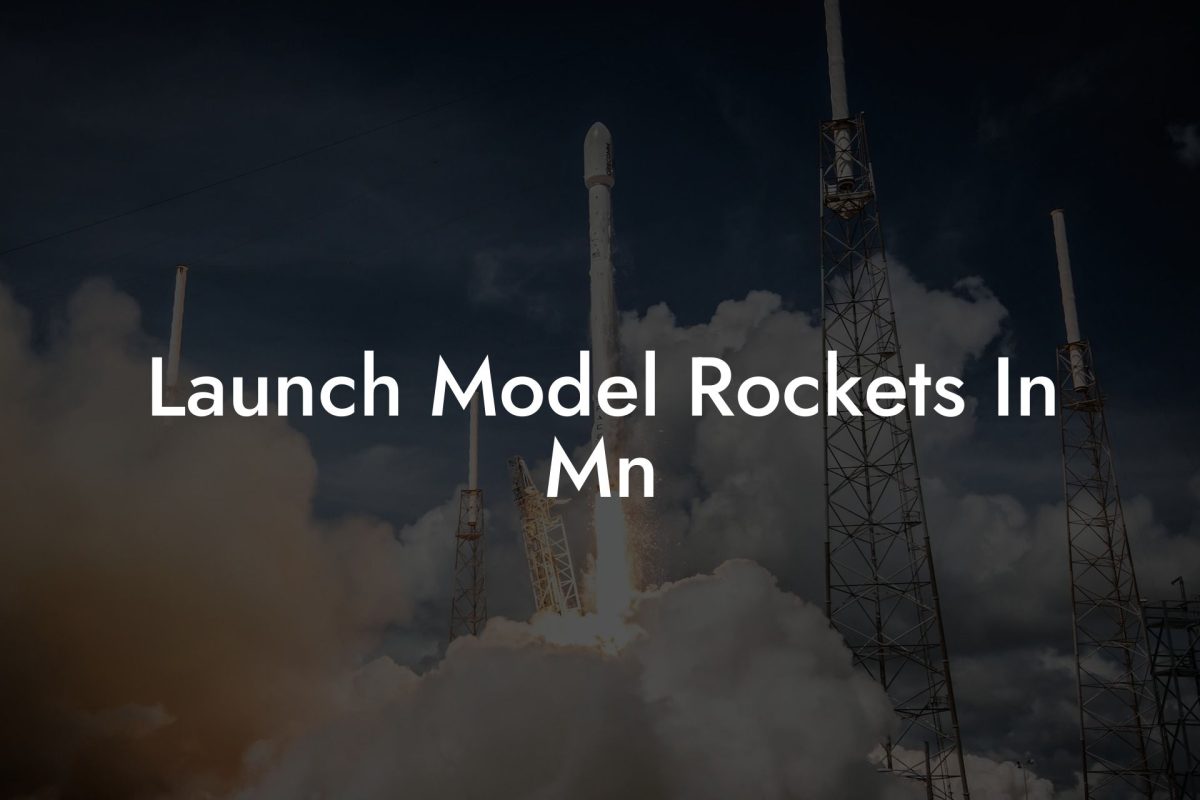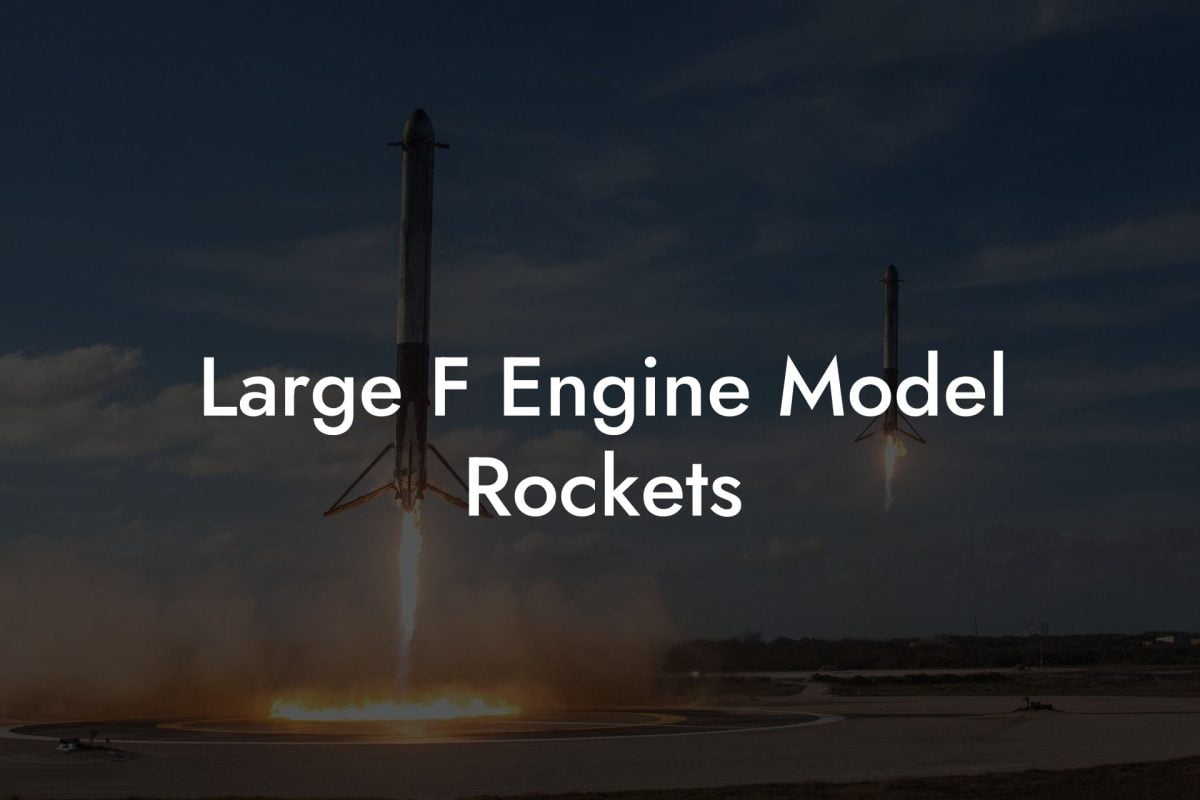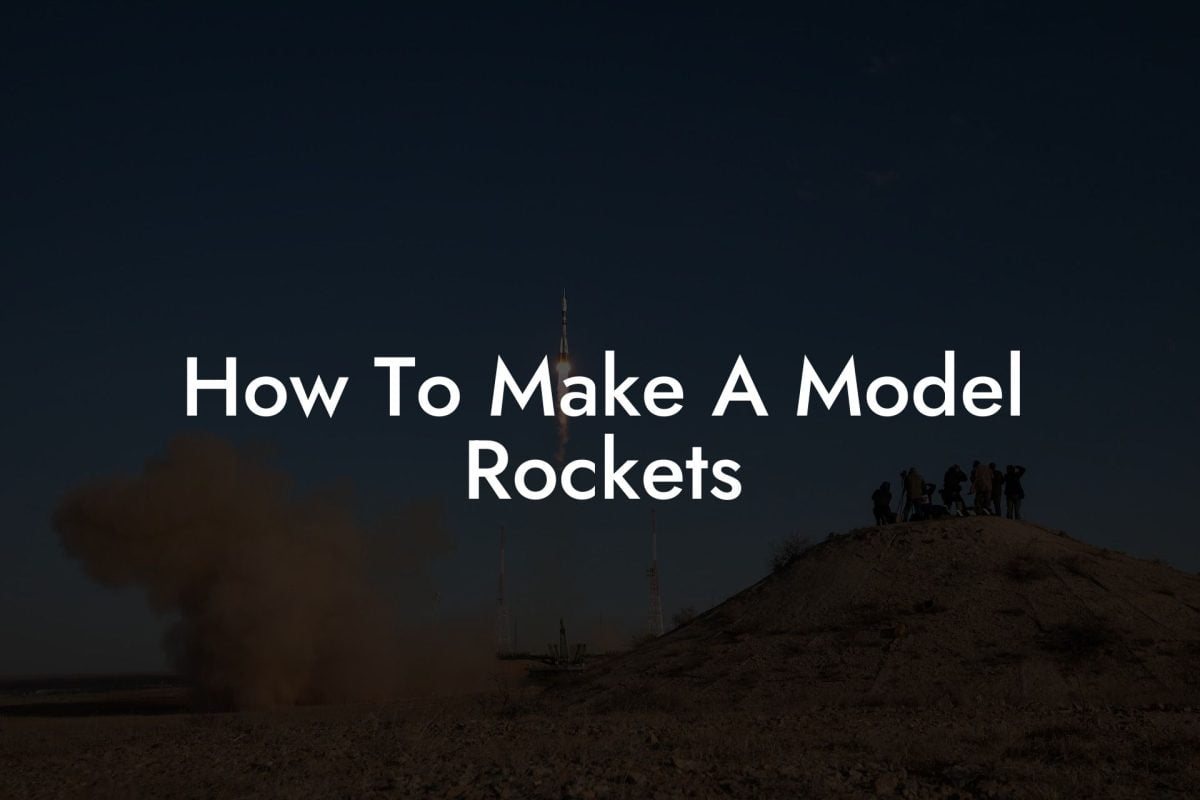Buckle up, space enthusiasts! The world of model rockets is about to get a whole lot more exciting. Imagine soaring to new heights, defying gravity, and exploring the unknown – all from the comfort of your own backyard. But before you blast off, you need to choose the right engine size for your model rocket. In this comprehensive guide, we'll dive into the world of model rockets engine sizes, covering everything from the basics to advanced techniques.
Quick Links to Useful Sections
What Are Model Rockets?
Model rockets are small, scale models of real rockets, designed to fly through the air and return safely to Earth. They're an exciting way to learn about science, technology, engineering, and mathematics (STEM) while having fun. Model rockets come in various shapes, sizes, and complexities, but they all share one thing in common: a powerful engine that propels them into the sky.
Engine size is a critical factor in determining the performance and safety of your model rocket. The right engine size can make all the difference between a successful launch and a disappointing failure. In this guide, we'll explore the different types of model rocket engines, their characteristics, and how to choose the perfect one for your next project.
Types of Model Rocket Engines
Model rocket engines come in a variety of sizes, shapes, and types. Here are some of the most common ones:
- A Engines: These are the smallest and most common type of model rocket engine. They're perfect for beginners and small rockets, producing a thrust of around 1-2 Newtons.
- B Engines: B engines are slightly larger than A engines, producing a thrust of around 2-5 Newtons. They're suitable for small to medium-sized rockets.
- C Engines: C engines are more powerful than B engines, producing a thrust of around 5-10 Newtons. They're ideal for medium-sized rockets and require more experience to handle.
- D Engines: D engines are the most powerful type of model rocket engine, producing a thrust of around 10-20 Newtons. They're suitable for large rockets and require advanced skills to handle.
- E Engines: E engines are even more powerful than D engines, producing a thrust of around 20-30 Newtons. They're typically used in large, complex rockets and require expert-level skills to handle.
Each engine type has its own unique characteristics, advantages, and disadvantages. When choosing an engine, you need to consider factors like the size and weight of your rocket, the desired altitude, and your level of experience.
Looking For The Best Model Rocket Kits? You'll Love These:
How to Choose the Right Engine Size
Choosing the right engine size for your model rocket is crucial for a successful launch. Here are some tips to help you make the right choice:
- Determine the rocket's weight: The heavier the rocket, the more powerful the engine needs to be. Make sure to calculate the total weight of your rocket, including the engine, payload, and recovery system.
- Consider the desired altitude: If you want your rocket to reach higher altitudes, you'll need a more powerful engine. However, be careful not to choose an engine that's too powerful, as it can lead to unstable flight.
- Check the engine's thrust-to-weight ratio: This ratio determines how efficiently the engine produces thrust. A higher ratio means a more efficient engine, but it also increases the risk of instability.
- Choose an engine with a suitable delay time: The delay time is the time it takes for the engine to ignite after launch. Choose an engine with a delay time that matches your rocket's ascent rate.
- Consider your level of experience: If you're a beginner, start with smaller engines and gradually move to more powerful ones as you gain experience.
By following these tips, you can choose the perfect engine size for your model rocket and ensure a successful launch.
Model Rocket Engine Safety
Safety is paramount when working with model rockets and their engines. Here are some essential safety tips to keep in mind:
- Always follow the manufacturer's instructions: Read and follow the engine manufacturer's instructions for handling, storage, and use.
- Wear protective gear: Wear safety glasses, gloves, and a face mask when handling engines and launching rockets.
- Launch in an open area: Choose a launch site with plenty of open space, away from people, animals, and flammable materials.
- Monitor the weather: Avoid launching in windy, rainy, or extreme weather conditions.
- Keep a fire extinguisher nearby: Have a fire extinguisher or a bucket of water nearby in case of an emergency.
By following these safety tips, you can minimize the risk of accidents and ensure a fun and enjoyable model rocketing experience.
Resources and community Support: Your Next Steps
Congratulations! You've made it to the end of our comprehensive guide to model rockets engine sizes. Now it's time to take your skills to the next level. Here are some resources and community support to help you on your journey:
- Model Rocket Clubs: Join a local model rocket club or online community to connect with other enthusiasts, share knowledge, and learn from experts.
- Online Forums: Participate in online forums and discussion groups dedicated to model rocketry.
- Tutorials and Guides: Find tutorials, guides, and videos on YouTube and other platforms to improve your skills and knowledge.
- Manufacturer's Websites: Visit engine manufacturers' websites for technical information, safety guidelines, and product support.
Remember, model rocketry is a hobby that requires patience, practice, and dedication. Stay safe, keep learning, and most importantly, have fun!
Looking For The Best Model Rocket Kits? You'll Love These:
Useful Interruption: Dive deeper into the world of Model Rockets with our most popular sections. If there is anything you think is missing or anything you would love for us to write about, just give us a shout.
- Getting Started & Basics With Model Rockets
- Model Rocket Design, Build & Customization
- Model Rocket Propulsion & Engine Technology
- Model Rocket Launch Techniques & Recovery
- Model Rocket Advanced Rocketry & Innovations
- Model Rocket DIY and Customization
- Model Rocket Equipment Reviews & Digital Tools
- Community, Competitions & Education
- Model Rocket Troubleshooting & FAQs
- Model Rocket Bonus/Seasonal & Niche Topics
A group of model rocket enthusiasts gathered at a field for their weekly launch event. Among them was Dave, a seasoned builder known for pushing the limits of hobby rocketry. This time, he had outdone himself.
“Ladies and gentlemen,” Dave announced, dramatically pulling a cloth off his latest creation, “I present to you: The Kraken!”
The crowd gasped. This wasn’t just a model rocket, it was a monster. The thing stood 8 feet tall, had six clustered engines, and was covered in enough duct tape to qualify as a classified aerospace project.
“Dave,” muttered Steve, the cautious safety officer, “Have you, uh… done the math on this?”
“Math?” Dave scoffed. “I built it in my garage at 3 a.m. with parts from eBay. This is an art piece, Steve.”
The countdown began.
5…
4…
3…
2…
1…
The engines ignited with a BOOM, and The Kraken shot up… kind of. It immediately did a violent barrel roll, narrowly missing the spectators before skyrocketing at an angle that could only be described as “legally questionable.”
The crowd collectively ducked as The Kraken flew straight over the adjacent cornfield, where Old Man Jenkins, the grumpiest farmer in town, was minding his business.
KABOOM!
The rocket disappeared behind the barn. A moment later, a flaming piece of Estes igniter wire landed at Steve’s feet. The silence was deafening.
And then, an unmistakable sound echoed across the field.
Jenkins’ shotgun being cocked.
“DAVE!!!” Steve shouted. “RUN.”
And that was the day Dave invented the first-ever biologically powered rocket booster: pure adrenaline.
To this day, nobody knows where The Kraken landed, but legend has it, it still haunts the skies, terrifying unsuspecting drones and low-flying birds.















